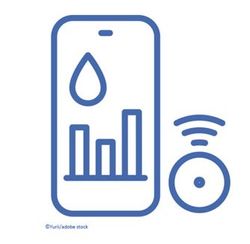The Value of Screening and Early Detection in Diabetic Retinopathy - Episode 10
Q&A: Diabetic Retinopathy Screening Devices and Technologies
Wade Brosius, DO, Shelton Hager, MD, and Steven Peskin, MD, answer questions relating to diabetic retinopathy screening devices and highlight novel technologies utilized in this space.
Allen Dobson, Jr., MD, FAAFP: Another question that came in says, “How do I know which system is right for my practice?” Are there are lot of choices out there? To follow on this, do you have any recommendations for any specificity? I heard Wade say the desktop screening system is well worth the extra money. Any comments on that?
Wade Brosius, DO: We did the research for our group. There were a couple of larger companies nationwide that did it. We selected Topcon as ours for a couple of reasons. But I’d strongly encourage people to think about using the desktop if they can because of the ease and the accuracy of the photos that go to the ophthalmologist.
When you’re using the handheld, it’s not that it’s impossible, but it’s a little more driven by the expertise of the person performing the test. Whereas, if you’re using the desktop, it’s a no-brainer. You just put your chin in there, you put your forehead up, it takes the picture, and off it goes. It’s almost universal. The technology works for you by making sure it’s getting a good view. It’s good, fair market value for what you’re getting. You’re getting great service. Part of the reason why we leased our technology is that it’s always updated. If things get even better, we’ll be getting a new camera. But if you can afford owning the camera, the ROI [return on investment] is even greater.
Allen Dobson, Jr., MD, FAAFP: Right. Steven, from a payer perspective, do you guys look at what systems they’re using, or are all of the things on the market pretty similar?
Steven Peskin, MD: That’s a great question. We don’t credential this. We do credential in-office radiology, but this isn’t something that we get into the weeds of. We trust the physicians to make the right decision. Their practice economics are their practice economics. We’ve given some compelling reasons that from a quality measure, getting your HEDIS [Healthcare Effectiveness Data and Information Set] and Medicare Star, as well as the fee-for-service aspect, that it makes sense.
Allen Dobson, Jr., MD, FAAFP: Great. Do any of our panelists have any closing thoughts? I hear a pretty compelling story for why primary care should be doing this and adding it to their practice if they’re not.
Steven Peskin, MD: We’ve got a way to go. I’m in a densely populated part of the country, and the physicians, family physicians, and general internists like myself are pretty astute, but I haven’t seen the adoption as much as I would have thought. That’s my closing comment.
Allen Dobson, Jr., MD, FAAFP: I hope this conversation will spur some more people to jump on the bandwagon and look at it. Primary care doctors are pretty overwhelmed these days, and thinking about something new is daunting, but this sure sounds like the right thing to do. Shelton, do you or Wade having anything else you’d like to add?
Shelton Hager, MD: It’s a good preventive measure. If you catch it early enough, you can prevent some disease and a lot of spin and heartache down the road. We all have busy practices. If you can have a MA [medical assistant] do it before you get in the room, it gives the patient something to do other than look into your drawers.
Wade Brosius, DO: Yes, and from my perspective, as it was said previously, we’re almost in a tidal wave of an epidemic of patients with diabetes coming into the health care system. There’s $230 billion in cost annually associated with diabetes, with direct and indirect care. As 30% of diabetics will have diabetic retinopathy over time, not only is this a great thing for the care of the patient, but as we continue to put a major strain on the health care economics of this country, this is one opportunity where we can very easily make some inroads. Everything I’m trying to do for our group is all about the Quadruple Aim, and this easily hits all 4 points. It should be a slam dunk for any primary care provider.
Allen Dobson, Jr., MD, FAAFP: Agreed. Steven, Wade, Shelton, thank you for joining us for this discussion on diabetic retinopathy management, brought to you by Patient Care®. I appreciate your time and expertise. I’m excited to hear about all the advances that have been made. I’d like to thank our viewing audience. We hope you found this interactive discussion to be informative and beneficial for your clinical practice. We hope to see more people doing diabetic screening.
Transcript Edited for Clarity



